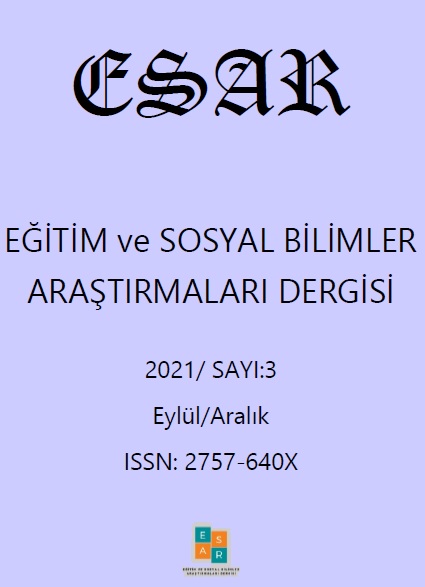Factors Affecting Intellectual Development in Kazan during the Renovation
DOI:
https://doi.org/10.5281/zenodo.13228005Keywords:
Movement of Jadidism, Kazan Turks , Russian Muslims , Modernization, RussiaAbstract
Kazan Tatar Turks, who came under Russian domination in 1552, tried to survive under the pressure and assimilation policies of the Russians for many years. Russia, which aims to make its dominance permanent by suppressing Kazan Tatar Turks through cultural assimilation, has tried to create a uniform person in Russia by pursuing a policy of Christianizing Kazan Tatar Turks. XIX. In the 16th century, an enlightenment movement emerged among Kazan Tatar Turks, who began to realize their historical identity and that they were behind the times. The revival of the idea of national awakening became a national movement called Jadidism over time, and the Jadidism movement spread and developed in other regions where Russian Turks lived under Russian rule. Several factors were also effective in the formation of the Jadidism movement and the awakening of the national consciousness. These factors have been shaped mainly by the relations between Kazan Tatar Turks and regions such as Russia, the Ottoman Empire, Egypt, and Turkistan geography, where they form a shape. The Jadidism movement, which developed under the leadership of İsmail Gaspıralı, took the modernization of education as its foundation and, being influenced by contemporary educational institutions, wanted to renew education. Thus, it has been accepted that the power behind the enlightenment of society is education. The modernization movement, which started in education, affected the social and political life in time and formed the method of the independence struggle of the Kazan Tatar Turks. Other factors that were effective in the development of the Jadidism movement were the currents such as Turkism, Islamism, and Socialism, which gained popularity and gathered supporters at that time. With the idea of national awakening, the Jadidism movement made it necessary to fight for their freedom.
References
HAYİT, B. (2004). Türkistan Devletlerinin Milli Mücadele Tarihi. Türk Tarih Kurumu Yayınları. Ankara.
DEVLET, N. (1998). 1917 Ekim İhtilali ve Türk-Tatar Meclisi. Ötüken Neşriyat. Ankara.
DEVLET, N. (2014). Rusya Türklerinin Milli Mücadele Tarihi 1905-1917. Türk Tarih Kurumu Yayınları. Ankara.
DEVLETŞİN, T. (1981). Sovyet Tataristan’ı(Çev. M. Emircan). Sevinç Matbaası. Ankara.
GÜNGÖR, E. (2011). Türkistanda Fikir Akımları, IQ Kültür Sanat Yayıncılık. İstanbul.
HABLEMİTOĞLU, N. (2005). Çarlık Rusyası’nda Türk Kongreleri (1905-1917). Toplumsal Dönüşüm Yayınları. İstanbul.
KANLIDERE, A. (2002).XIX ve XX. Yüzyıllarda Kazan Tatarları, Türkler.(18), Yeni Türkiye Yayınları, 718-729.
KURAT, A. N. (1966). Kazan Türklerinin Medeni Uyanış Devri (1917 Yılına Kadar). Ankara Üniversitesi Dil ve Tarih Coğrafya Fakültesi Dergisi, 3-4 (24), 95-194.
KURAT, A. N. (1987). Rusya Tarihi Başlangıçtan 1917’ye Kadar. Türk Tarih Kurumu Yayınları. Ankara.
TAYMAS, A. B. (1966). Kazan Türkleri Türk Tarihinin Hazin Yaprakları. Türk Kültürünü Araştırma Enstitüsü. Ankara.
TÜRKOĞLU, İ. (2006). Müslüman Kongreleri. Türkiye Diyanet Vakfı İslam Ansiklopedisi (DİA). (32). İstanbul. 96-98.
Downloads
Published
Issue
Section
License
Copyright (c) 2021 ESAR Journal

This work is licensed under a Creative Commons Attribution-NonCommercial-NoDerivatives 4.0 International License.
